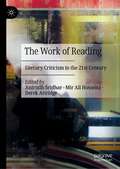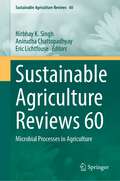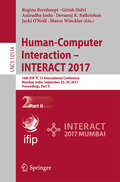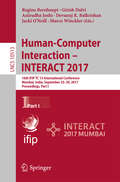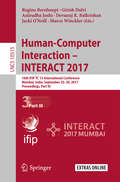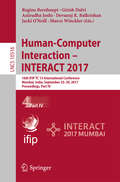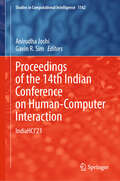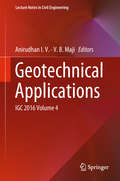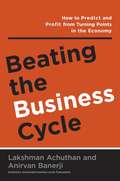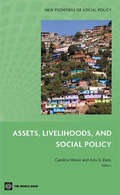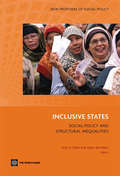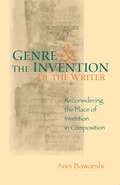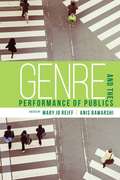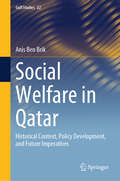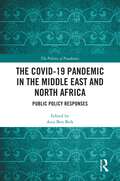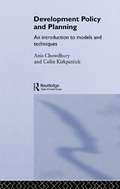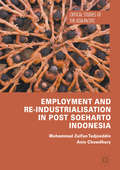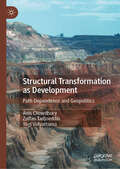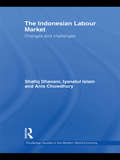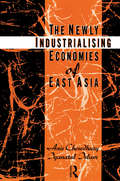- Table View
- List View
Biosensors Based on Graphene, Graphene Oxide and Graphynes for Early Detection of Cancer
by Chandrabhan Verma Pallavi Jain Prashant Singh Anirudh Pratap Singh Raman Kamlesh KumariThe detection of cancer at its earliest stages is paramount for successful treatment and improved patient outcomes. In recent years, the field of nanotechnology has witnessed significant advancements, and one material that has emerged as a potential game-changer in cancer detection is graphene. Graphene's high surface area, excellent electrical conductivity, and ability to interact with biological molecules have paved the way for innovative approaches to diagnosing cancer. Moreover, graphene oxide, a derivative of graphene, has gained significant attention in the field of cancer detection. Its unique properties, including biocompatibility and high photothermal conversion efficiency, enable its use in various imaging techniques. Graphene oxide can selectively accumulate in tumor tissues, enhancing the contrast signals in imaging modalities like optical imaging, magnetic resonance imaging (MRI), and photoacoustic imaging. This allows for precise visualization and localization of cancerous cells or tissues, aiding in early detection and accurate diagnosis.Features: Provides a comprehensive exploration of carbon, its allotropes, and its significance in emerging applications. Discusses the synthesis and functionalization of graphene on diverse substrates, and modeling approaches employed in graphene research. Details the application of graphene, graphene oxide, and graphyne-based materials on cancer detection. Explores the overview of the wider biological applications of carbon-based materials. This book will serve as a valuable reference source for researchers, academics, and biologists working in R&D and interested in biosensing for the early detection of cancer.
Translating the Paris Agreement into Action in the Pacific (Advances in Global Change Research #68)
by Anirudh SinghThis book provides an insight into how a country contributes to the GHG emissions reductions required to keep global warming within the limits set by the Paris Agreement arrived at COP21 in 2015. It shows what actions are needed for the implementation plan that Fiji will use to satisfy its quota (i.e. its Nationally Determined Contribution or NDC) of the total GHG emissions reductions. It is a primary resource material for those who wish to obtain an understanding of the science behind climate change mitigation. It reveals the behind-the-scenes action that takes place to convert the rhetoric of climate change into the action on the ground that actually reduces the GHG emissions and global warming. The book also presents a critique of methods adopted by nations in meeting their NDCs to emissions reductions as agreed at the Paris Agreement, and suggests improvements.
The Work of Reading: Literary Criticism in the 21st Century
by Derek Attridge Anirudh Sridhar Mir Ali HosseiniThe Work of Reading: Literary Criticism in the 21st Century is a sustained critical examination of the developments in the field of literary studies from the early 2000s onwards within the context of the systematic problems in the humanities. This volume analyzes the origins of the current methods—including New Historicism, empiricism, New Formalism, postcritique, and others—and posits alternatives to the present state of literary studies. At a time when many aspects of current methods show a desire to adopt values from other disciplines to solve internal crises, this volume advocates a renewed focus on questions of form by means of the praxis of aesthetic study, close reading, and other modes of engaging directly with literary texts.
Sustainable Agriculture Reviews 60: Microbial Processes in Agriculture (Sustainable Agriculture Reviews #60)
by Eric Lichtfouse Nirbhay K. Singh Anirudha ChattopadhyayIn the context of rising adverse effects of climate change on agriculture, there is a need for advanced methods and practices to manage soils for production of food and energy. This book presents the latest advances in microbial processes that control plant growth, with focus on genomic tools, microbial interactions with the plant and soils habitats, mobilization of plant nutrients, agricultural waste management, biodegradation, bioremediation, carbon sequestration, land reclamation, plant growth promotion, suppression of plant pathogens, induced systemic resistance and tolerance against biotic and abiotic stresses.
Human-Computer Interaction - INTERACT 2017
by Regina Bernhaupt Marco Winckler Girish Dalvi Anirudha Joshi Devanuj K. Balkrishan Jacki O'NeillThe four-volume set LNCS 10513--10516 constitutes the proceedings of the 16th IFIP TC 13 International Conference on Human-Computer Interaction, INTERACT 2017, held in Mumbai, India, in September 2017. The total of 68 papers presented in these books was carefully reviewed and selected from 221 submissions. The contributions are organized in topical sections named: Part I: adaptive design and mobile applications; aging and disabilities; assistive technology for blind users; audience engagement; co-design studies; cultural differences and communication technology; design rationale and camera-control. Part II: digital inclusion; games; human perception, cognition and behavior; information on demand, on the move, and gesture interaction; interaction at the workplace; interaction with children. Part III: mediated communication in health; methods and tools for user interface evaluation; multi-touch interaction; new interaction techniques; personalization and visualization; persuasive technology and rehabilitation; and pointing and target selection.
Human-Computer Interaction - INTERACT 2017
by Regina Bernhaupt Marco Winckler Girish Dalvi Anirudha Joshi Devanuj K. Balkrishan Jacki O'NeillThe four-volume set LNCS 10513--10516 constitutes the proceedings of the 16th IFIP TC 13 International Conference on Human-Computer Interaction, INTERACT 2017, held in Mumbai, India, in September 2017. The total of 68 papers presented in these books was carefully reviewed and selected from 221 submissions. The contributions are organized in topical sections named: Part I: adaptive design and mobile applications; aging and disabilities; assistive technology for blind users; audience engagement; co-design studies; cultural differences and communication technology; design rationale and camera-control. Part II: digital inclusion; games; human perception, cognition and behavior; information on demand, on the move, and gesture interaction; interaction at the workplace; interaction with children. Part III: mediated communication in health; methods and tools for user interface evaluation; multi-touch interaction; new interaction techniques; personalization and visualization; persuasive technology and rehabilitation; and pointing and target selection.
Human-Computer Interaction – INTERACT 2017
by Regina Bernhaupt Marco Winckler Girish Dalvi Anirudha Joshi Devanuj K. Balkrishan Jacki O'NeillThe four-volume set LNCS 10513--10516 constitutes the proceedings of the 16th IFIP TC 13 International Conference on Human-Computer Interaction, INTERACT 2017, held in Mumbai, India, in September 2017. The total of 68 papers presented in these books was carefully reviewed and selected from 221 submissions. The contributions are organized in topical sections named: Part I: adaptive design and mobile applications; aging and disabilities; assistive technology for blind users; audience engagement; co-design studies; cultural differences and communication technology; design rationale and camera-control. Part II: digital inclusion; games; human perception, cognition and behavior; information on demand, on the move, and gesture interaction; interaction at the workplace; interaction with children. Part III: mediated communication in health; methods and tools for user interface evaluation; multi-touch interaction; new interaction techniques; personalization and visualization; persuasive technology and rehabilitation; and pointing and target selection.
Human-Computer Interaction – INTERACT 2017
by Regina Bernhaupt Marco Winckler Girish Dalvi Anirudha Joshi Devanuj K. Balkrishan Jacki O’neillThe four-volume set LNCS 10513--10516 constitutes the proceedings of the 16th IFIP TC 13 International Conference on Human-Computer Interaction, INTERACT 2017, held in Mumbai, India, in September 2017. The total of 68 papers presented in these books was carefully reviewed and selected from 221 submissions. The contributions are organized in topical sections named: Part I: adaptive design and mobile applications; aging and disabilities; assistive technology for blind users; audience engagement; co-design studies; cultural differences and communication technology; design rationale and camera-control. Part II: digital inclusion; games; human perception, cognition and behavior; information on demand, on the move, and gesture interaction; interaction at the workplace; interaction with children. Part III: mediated communication in health; methods and tools for user interface evaluation; multi-touch interaction; new interaction techniques; personalization and visualization; persuasive technology and rehabilitation; and pointing and target selection.
Proceedings of the 14th Indian Conference on Human-Computer Interaction: IndiaHCI'23 (Studies in Computational Intelligence #1162)
by Anirudha Joshi Gavin R. SimThe book includes peer-reviewed proceedings of the 14th edition of the Indian conference series on Human-Computer Interaction (HCI) Design and Research. The volume focuses on several aspects of interactive technology design within the larger context of innovation in emerging markets and diverse end-users. The focus areas include Design for User Experience and Usability, Design for Immersive Environment and Interactions, Design for Art, Culture, and Humanity, HCI for Games/ Entertainment Computing/ Creative Computation, Design for Indian Knowledge System and Social Organisation, Design for Digital Learning and Creativity, Design for HCI Applications. This book will be useful for academia, industry, professionals, and others interested in revisiting design approaches and methods.
Atlas of Difficult Gynecological Surgery
by Anirudha Rohit Podder Jyothi G SeshadriCovering various difficult surgeries encountered in daily gynecological practice and providing unique insights into operative gynecology, this atlas offers an essential learning guide for gynecologists. Standard gynecological surgeries may turn out to be extremely complex on the operating table; this atlas demonstrates how the operating gynecologist can manage such procedures successfully without causing any injuries. For each surgery, it includes a series of color photographs accompanied by descriptive step by step notes, explaining to the readers the surgical steps and the problems that might occur if the dissection is not performed correctly. Helping readers understand and visualize the textbook descriptions of gynecological surgeries, the atlas offers a valuable resource for postgraduate students and fellows of obstetrics and gynecology, as well as senior practicing gynecologists, urologists and surgeons.
Geotechnical Applications: IGC 2016 Volume 4 (Lecture Notes in Civil Engineering #13)
by Anirudhan I. V. V. B. MajiThis book comprises select proceedings of the annual conference of the Indian Geotechnical Society. The conference brings together research and case histories on various aspects of geotechnical engineering and geoenvironmental engineering. The book presents papers on geotechnical applications and case histories, covering topics such as (i) shallow and deep foundations; (ii) stability of earth and earth retaining structures; (iii) rock engineering, tunneling, and underground constructions; (iv) forensic investigations and case histories; (v) reliability in geotechnical engineering; and (vi) special topics such as offshore geotechnics, remote sensing and GIS, geotechnical education, codes, and standards. The contents of this book will be of interest to researchers and practicing engineers alike.
Beating the Business Cycle
by Lakshman Achuthan Anirvan BanerjiHow can you make wise decisions about your company and your personal future when you have no idea where the economy is headed? The answer is, you can’t. But you can learn how to accurately predict turns in the economy so that you can see the road ahead. And BEATING THE BUSINESS CYCLE shows you how. In BEATING THE BUSINESS CYCLE, Lakshman Achuthan and Anirvan Banerji, the directors of the renowned Economic Cycle Research Institute (ECRI) show how anyone can predict and profit from the inevitable booms and busts of the economy. Why should we believe them? Because while so many economists and financial gurus have failed to predict recessions in the past, ECRI’s forecasts are known for being uncannily accurate. The institute successfully predicted the U. S. recession of 2001 many months before the economists did; the 1990 recession and later recovery; and most recently, the weak U. S. recovery in 2002. ECRI is in constant demand by corporate America and the media. It is the “secret weapon” of companies from Disney to DuPont, the major fund managers, and many central banks. BEATING THE BUSINESS CYCLE is the first book to reveal how decision makers at all levels–managers, small business owners, and individuals–can see into the economy’s future when making key decisions. Should a large company search out new clients and build new factories or stores, or should it consider cost cutting and layoffs? Is it the right time for you to splurge on that luxury vacation or addition to your house, or would it be more prudent to cut back on big expenditures and save money for a rainy day? Written in an easy-to-understand, accessible style, BEATING THE BUSINESS CYCLE reveals which of the hundreds of economic indicators to trust and which ones to trash. It will give you the tools and confidence you need to make the right decisions at the right times–even when the rest of the investing and business world would persuade you otherwise. Whether you are a corporate manager or the owner of a small business, whether you have your money invested in stocks or in your home, BEATING THE BUSINESS CYCLE will give you the edge you need to trump the competition and stay ahead of the crowd.
Assets, Livelihoods, and Social Policy
by Caroline Moser Anis A. DaniGiven the lack of adequate universal social welfare for those unable to find jobs in the salaried formal sector, the livelihoods and well-being of most poor people depends heavily on their asset base. This includes their ability to access and accumulate assets, obtain decent returns from these assets, and use their asset base to manage risks. 'Assets, Livelihoods, and Social Policy' discusses the diverse strategies adopted by people in different contexts to accumulate assets through migration, housing investments, natural resources management, and informal businesses. An asset-based social policy can strengthen asset accumulation strategies as well as help the poor overcome the constraints of unfavorable institutional environments. To a considerable extent, asset accumulation strategies depend on the agency exercised by people themselves through individual or collective action. At the same time, the status of policies and institutions can enable or hinder these strategies and affect livelihood outcomes. In synthesis, the case studies lead to the differentiation among three different types of policies: - policies that affect outcomes by directly influencing access to assets by the poor-such as land, housing, natural resources, or credit. - policies and public investments that change the nature of returns on assets-such as investments in rural roads, agricultural inputs, and market development. - policies that transform the value of assets held by the poor by virtue of administrative decisions that increase or reduce value-such as re-classification of land from arable or pasture to protected lands, land use regulations affecting resource use, or modification in regulations governing labor rights or migration. The chapters, originally commissioned to re-examine major gaps in knowledge and development practice ten years after the Copenhagen Summit on Social Development, are authored by leading scholars from economics, anthropology, sociology, geography, and development studies. This book is part of a new series, New Frontiers in Social Policy, which examines issues and approaches to extend the boundaries of social policy beyond conventional social services toward policies and institutions that improve equality of opportunity and social justice in developing countries. Other titles in the series include Inclusive States: Social Policy and Structural Inequalities, and Institutional Pathways to Equity: Addressing Inequality Traps.
Inclusive States: Social Policy and Structural Inequalities
by Anis A. Dani Arjan De HaanThe heterogeneity of social structures and cultural identities in many developing countries, together with traditional hierarchies, rivalries, and deep-seated biases, has perpetuated inequities. Inclusive States: Social Policy and Structural Inequalities examines the role of the state and society in addressing structural inequalities and identifies a set of policy recommendations to redress them. This book defines structural inequality as a condition arising from unequal status attributed to a category of people in relation to others, a relationship perpetuated and reinforced by unequal relations in roles, functions, decision rights, and opportunities. Inclusive states are those that direct policies to address the needs of all, that respect the rights of citizens to exercise voice and influence on which services are provided and how they are delivered, and that have an interest in strengthening the social contract with their citizens. A central focus of policy remains a concern for equity, both to level the playing field to encourage social mobility and to ensure equity in the distributional effects of policy reforms and development interventions. This book highlights two key challenges for social policy. First, policy design needs to take into account the weaknesses of basic state functions in many developing countries, since these have important ramifications for social policy outcomes. Second, in most developing countries social structures marked by historically rooted structural inequalities pose significant challenges to the provision of services and require a long-term commitment to address underlying questions and problems. This book describes some of the challenges found in different contexts and some of the ways in which these challenges can be-and are being-addressed. This book is part of a new series, New Frontiers in Social Policy, which examines issues and approaches to extend the boundaries of social policy beyond conventional social services toward policies and institutions that improve equality of opportunity and social justice in developing countries. Other forthcoming titles in the series include Assets, Livelihoods, and Social Policy, and Institutional Pathways to Equity: Addressing Inequality Traps.
Genre And The Invention Of The Writer: Reconsidering the Place of Invention in Composition
by Anis BawarshiIn a focused and compelling discussion, Anis Bawarshi looks to genre theory for what it can contribute to a refined understanding of invention. In describing what he calls "the genre function," he explores what is at stake for the study and teaching of writing to imagine invention as a way that writers locate themselves, via genres, within various positions and activities. He argues, in fact, that invention is a process in which writers are acted upon by genres as much as they act themselves. Such an approach naturally requires the composition scholar to re-place invention from the writer to the sites of action, the genres, in which the writer participates. This move calls for a thoroughly rhetorical view of invention, roughly in the tradition of Richard Young, Janice Lauer, and those who have followed them. Instead of mastering notions of "good" writing, Bawarshi feels that students gain more from learning how to adapt socially and rhetorically as they move from one "genred" site of action to the next.
Genre and the Performance of Publics
by Mary Jo Reiff Anis BawarshiIn recent decades, genre studies has focused attention on how genres mediate social activities within workplace and academic settings. Genre and the Performance of Publics moves beyond institutional settings to explore public contexts that are less hierarchical, broadening the theory of how genres contribute to the interconnected and dynamic performances of public life. Chapters examine how genres develop within publics and how genres tend to mediate performances in public domains, setting up a discussion between public sphere scholarship and rhetorical genre studies. The volume extends the understanding of genres as not only social ways of organizing texts or mediating relationships within institutions but as dynamic performances themselves. By exploring how genres shape the formation of publics, Genre and the Performance of Publicsbrings rhetoric/composition and public sphere studies into dialogue and enhances the understanding of public genre performances in ways that contribute to research on and teaching of public discourse.
Public Policy Evaluation in the Middle East and North Africa
by Anis Ben BrikThis book examines the progress of the development of public policy evaluation in the Middle East and North Africa (MENA) region from multiple perspectives. It describes both past developments and the current state of evaluation across the region, focusing on how political regimes, administrative traditions and policy advisory systems shape evaluation processes in different contexts. With contributions from a diverse list of international authors, it investigates the historical development of evaluation across the MENA region and analyses the political landscape, highlighting emerging trends and potential challenges that could influence the future of the field. An essential resource for researchers and practitioners in evaluation, public policy and the MENA region, the book also provides students with the practical knowledge and essential skills needed for careers in evaluation and policy analysis.
Social Welfare in Qatar: Historical Context, Policy Development, and Future Imperatives (Gulf Studies #22)
by Anis Ben BrikThis book offers an in-depth analysis of social welfare system in a rentier state, Qatar, tracing its evolution and institutional development. Through the innovative lens of 'modern traditionalism,' it examines how Qatar blends contemporary social policies with traditional cultural values across nine key sectors: public health, education, social security, social care, housing, disability, employment, family, and gender. The book's unique approach combines the Policy Arrangement Approach with Rentier State Theory and Historical Institutionalism to provide in-depth analyses of Qatar's social welfare policies. This interdisciplinary perspective offers fresh insights into the interplay between modernization, tradition, and social policy in a rentier state. Covering historical trajectories, current institutional arrangements, and future challenges, the book provides a holistic view of Qatar's social welfare system. It explores how the country navigates the tensions between rapid modernization and cultural preservation, offering valuable lessons for other countries. Intended for academics, policymakers, and students in public policy, Middle Eastern studies, social policy, and development studies, this book offers both theoretical depth and practical insights. It is an essential resource for understanding social welfare development in resource-rich states, offering valuable insights for both academic research and policy formulation in the Arab Gulf region and beyond.
The COVID-19 Pandemic in the Middle East and North Africa: Public Policy Responses (The Politics of Pandemics)
by Anis Ben BrikThis book critically reflects on the responses to the COVID-19 pandemic in the Middle East and North Africa (MENA) by exploring the impact and possible future outcomes in a region already struggling with the effects of a decade of uprisings, failed or difficult political transitions, state collapses, civil war and international conflict. International scholars offer a comprehensive treatment of today's major societal issues and provide a unique, broadly comparative view on public policy responses in the MENA region. Addressing the implications and public policy responses to the crisis they bring a critical perspective to the emerging challenges of evidence-based policy making; the locus of authority in transnational issues; the nature of governance, and the role of government and implications for civil society. Tackling the psychology, sociology, education, law, and public policy issues related to the social and economic implications of the COVID 19 pandemic, this book will be of interest to scholars and students alike.
Development Policy and Planning: An Introduction to Models and Techniques
by Anis Chowdhury Colin KirkpatrickReorientation from economic controls to a market-based approach led to significant changes in the economic policy of developing countries in the 1980s. Yet, with governments continuing to exercise economic management to accelerate growth beyond that achieved by market forces, techniques and models of development planning are still an integral feature of development policy management. Development Policy and Planning provides a non-technical explanation of the main techniques and models used for economic policy formulation. Each technique is illustrated in application through practical examples.
Employment and Re-Industrialisation in Post Soeharto Indonesia: Labour Market Institutions In Democratic And Decentralized Indonesia (Critical Studies of the Asia-Pacific)
by Anis Chowdhury Mohammad Zulfan TadjoeddinThis book studies the challenges for Indonesia, once a miracle economy, as it faces premature deindustrialisation, rising inequality and domestic and external factors impacting its export-oriented industrialization. Since the fall of Soeharto, Indonesia has undergone a far-reaching systemic transition from centralised and autocratic governance to a highly decentralised and democratic system. Complicated by regional variations, the country is now being called upon to respect labour rights and, amidst slow global economic recovery, is facing increased competition from other low-labour-cost countries, especially within the ASEAN Economic Community. Tadjoeddin and Chowdhury posit that Indonesia cannot recreate its past miracle based on cheap labour and suppression of labour rights. It will need to move quickly to high value-added activities driven by productivity growth and to develop its domestic market.
Structural Transformation as Development: Path Dependence and Geopolitics
by Anis Chowdhury Zulfan Tadjoeddin Yogi VidyattamaThis book evaluates development progress using the lens of structural transformation in four groups of developing countries: Africa’s least developed countries (LDCs), Asia’s LDCs, landlocked Central Asian countries, and Pacific small island states. The analysis presented is contextualized in the diverse economic characteristics and geopolitical landscape of the four categories of countries. In doing so, research on Africa’s LDCs emphasizes the overall picture of missed economic opportunities, while the research on Asia's LDCs focus on policy lessons. The chapter on landlocked Central Asian countries focuses more on the unique transition experience of those countries coming out from USSR hinterlands to independent states in the wake of the third wave of democratisation in the 1990s. Lastly the evaluation of Pacific small island states is very much influenced by the fate of geography for being small in size and remotely located. The diverse coverage offers readers rich varieties of structural transformation experiences and comparative development perspectives. The book is non-technical, with descriptive, narrative, and analytical approaches on comparative development, making it suitable and accessible for non-specialist audiences.
The Indonesian Labour Market: Changes and challenges (Routledge Studies in the Modern World Economy)
by Iyanatul Islam Anis Chowdhury Shafiq DhananiThe topics of unemployment, underemployment, wage trends and patterns, and the relationship between poverty and the labour market are of interest to all policy makers, researchers, academics and journalists concerned with economic development. This book traces the evolution of the Indonesian labour market between the early 1970s and late 2000s. This entails a (a) review of macroeconomic policies and their employment impact; (b) review of unemployment and underemployment trends; (c) review of wage trends and living standards; (d) relationship between poverty, inequality and the labour market; and (e) labour market regulations, employment and the business environment. The book comes up with a number of policy-relevant findings. Macroeconomic policies, particularly inflation targeting in the 2000-2007 period, have not been conducive to employment generation. The assumption that unemployment is an appropriate indicator of labour market performance and, more importantly, that it is closely aligned with poverty, is shown to be inaccurate. Sustained real wage growth in the twenty-year period before the 1997 financial crisis is contrasted with the lack of improvement since then, a period otherwise of respectable economic growth by international standards. The predicted adverse consequences of sweeping labour market regulations in 2000-2007 on properly measured employment, unemployment and labour costs did not materialize, mainly because of low compliance. It seems that a restrictive macroeconomic framework has been more constraining for employment growth than the perceived labour market rigidity during the post-crisis period. The book concludes with an evaluation of several ‘reactive’ and ‘proactive’ labour market policies. Though these are complementary, policy makers in Indonesia have probably put too much emphasis on reactive policies such minimum wage and severance pay, and not enough on proactive policies aimed at creating an adaptable and skilled workforce.
The Newly Industrializing Economies of East Asia
by Iyanatul Islam Anis ChowdhuryThe phenomenal success of the East Asian Newly Industrializing Economies (NIEs) of Korea, Taiwan, Hong Kong, and Singapore is now well-known and documented. Their success has been discussed to such an extent that it has become entrenched as part of the folklore of development economics. The Newly Industrializing Economies of East Asia takes a fresh look at the relevant literature and sifts the rhetoric from the reality. In the course of surveying the vast range of writing two competing paradigms become clear: the neo-classical approach which interprets the East Asian economic miracle as the predictable outcome of `good' policies; and the statist perspective which draws attention to the central role of the government in guiding East Asian economic development. Throughout the book the authors mix country-specific experiences with broader trends.


